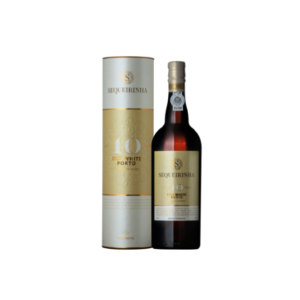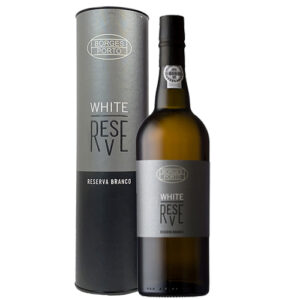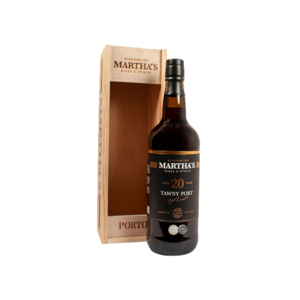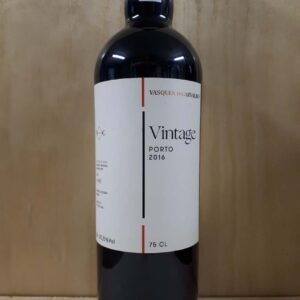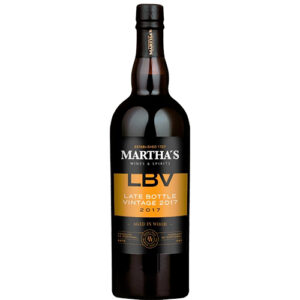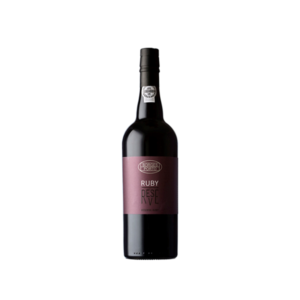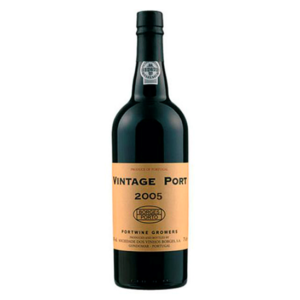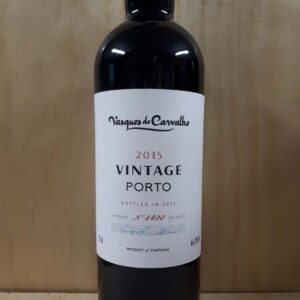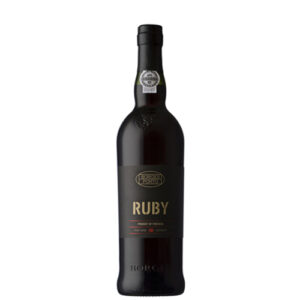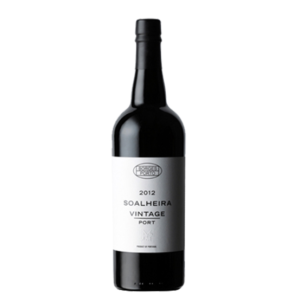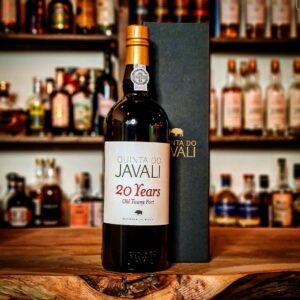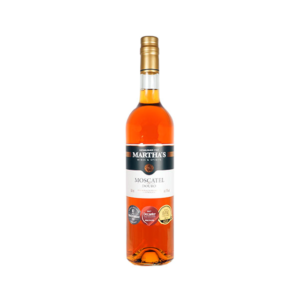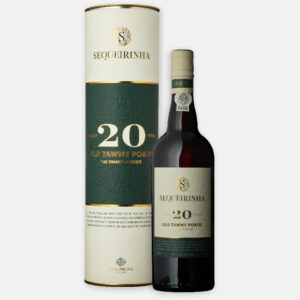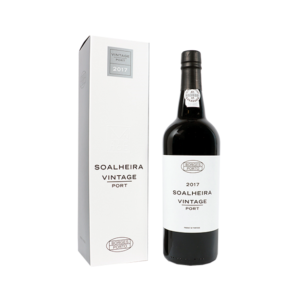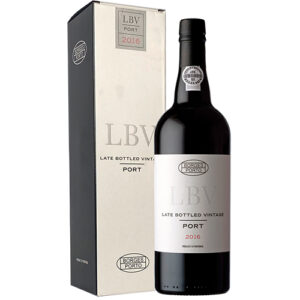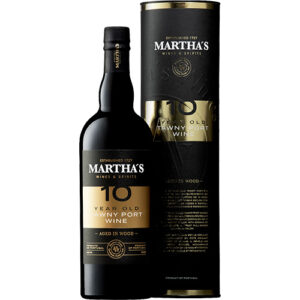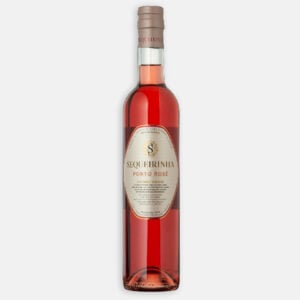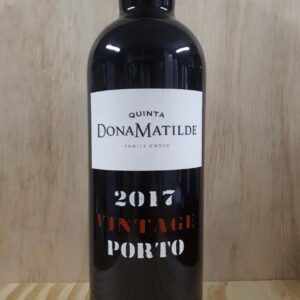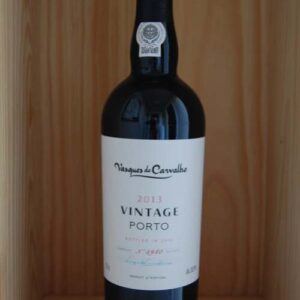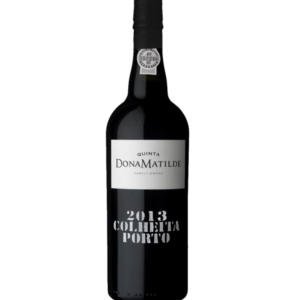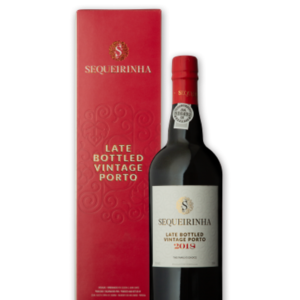Showing 1–24 of 52 resultsSorted by popularity
Wine – The Complete Guide
TL;DR: In Brief
- Wine is characterized by its vast diversity of flavors, aromas, and styles developed over thousands of years
- Primarily made from fermented grape juice and defined by the absence of distillation
- Found in several styles, including red, white, rosé, sparkling, and fortified
- Best enjoyed at proper serving temperatures in appropriate glassware and can be experienced in Sangria or Mulled Wine
Disclaimer: This guide is intended for informational purposes for adults over 18 years of age. Vault of Spirits encourages responsible alcohol consumption.
Introduction to Wine
Wine has a rich history and fascinating craftsmanship behind it. From its origins in ancient regions like Georgia and Mesopotamia to its global popularity today, this beverage has evolved to become one of the world’s most cherished.
This guide provides insight into wine production, taste profiles, and enjoyment, whether you’re a novice or experienced enthusiast.
Wine’s remarkable ability to express both its geographic origins and the artistry of its maker has earned it a special place in human culture, cuisine, and celebration for millennia.
How Did Wine Originate?
From Past to Present
Wine’s story begins approximately 8,000 years ago, with archaeological evidence of winemaking dating back to 6000 BCE in Georgia, where grape residue was found in clay vessels.
Ancient Egyptians documented winemaking on tomb walls, while the Greeks and Romans elevated wine to near-religious status, spreading viticulture throughout their empires.
The Middle Ages saw European monasteries preserving and refining winemaking techniques, establishing many of the renowned wine regions we know today.
Which Historical Milestones Have Shaped Wine?
The development of glass bottles and cork stoppers in the 17th century revolutionized wine storage and aging potential.
The phylloxera epidemic of the late 19th century devastated European vineyards, leading to the widespread practice of grafting European vines onto American rootstock.
The 1976 “Judgment of Paris” blind tasting, where California wines triumphed over French classics, transformed the global wine landscape by proving that exceptional wines could be produced outside traditional European regions.
How Has Wine Influenced Cultural Traditions?
Wine has been integral to religious ceremonies across multiple faiths, from Jewish Kiddush to Christian communion.
Harvest festivals in wine regions worldwide celebrate the annual grape harvest, fostering community bonds and preserving cultural heritage.
The Mediterranean concept of “terroir” – the environmental factors affecting crop quality – has influenced not just winemaking but broader agricultural philosophies and cultural identities.
Why Is Wine Popular Today?
Wine’s diverse flavor profiles appeal to a wide range of palates, offering something for every taste preference.
The rise of wine tourism has transformed once-rural wine regions into destinations for culinary and cultural experiences.
Growing interest in sustainability and artisanal production has elevated small-scale winemakers, creating a vibrant market for unique, expressive wines.
How Is Wine Produced?
Which Raw Materials Are Used in Production?
Wine primarily comes from fermented grape juice, though the specific varieties and growing conditions dramatically influence the final product.
Primære ingredienser:
- Grapes – The foundation of wine, with thousands of varieties (Vitis vinifera being the most common species used) each imparting unique characteristics
- Yeast – Converts grape sugars into alcohol and contributes to flavor compounds
- Water – Naturally present in grapes, its ratio affects concentration and body
How Does the Fermentation Process Work?
Fermentation begins when yeast (either naturally present on grape skins or added by winemakers) converts grape sugars into alcohol and carbon dioxide.
For red wines, fermentation typically occurs with grape skins and seeds included, extracting color, tannins, and flavor compounds.
White wines usually involve pressing the grapes first and fermenting only the juice, creating lighter, fresher profiles.
Fermentation temperatures are carefully controlled, with cooler temperatures (10-18°C for whites) preserving delicate aromas and warmer temperatures (20-30°C for reds) enhancing extraction and structure.
Which Distillation Techniques Are Used?
Unlike spirits, regular wine is not distilled – this absence of distillation is a defining characteristic that keeps alcohol levels typically between 8-15%.
Fortified wines like Port and Sherry incorporate distilled grape spirits to halt fermentation and increase alcohol content.
Some winemakers use techniques like cryo-extraction (freezing grapes) to concentrate flavors without distillation.
What Is the Significance of Aging?
Aging transforms wine through slow oxidation and chemical changes, potentially adding complexity and softening harsh elements.
Oak barrel aging imparts flavors like vanilla, spice, and toast while allowing minimal oxygen interaction.
Different wines have vastly different aging potentials – some white wines are best consumed young, while certain reds can improve for decades.
Bottle aging occurs after bottling, with reduced oxygen exposure creating more gradual changes than barrel aging.
Which Regions Are Known for Wine?
Where Are the Best Varieties Produced?
France stands as the historic benchmark with regions like Bordeaux, Burgundy, and Champagne setting global standards for their respective styles.
Italy offers incredible diversity with over 400 official grape varieties across regions like Tuscany, Piedmont, and Sicily.
New World regions including Napa Valley (USA), Barossa Valley (Australia), and Mendoza (Argentina) have established world-class reputations for bold, fruit-forward wines.
Emerging regions in countries like New Zealand, Chile, South Africa, and China continue to expand the global wine map with distinctive offerings.
How Do Geography and Climate Affect the Taste?
Cool climate regions typically produce wines with higher acidity, lower alcohol, and more delicate flavors, exemplified by German Riesling or Champagne.
Warm climate regions tend to yield riper, fuller-bodied wines with higher alcohol and richer fruit profiles, like Australian Shiraz or Californian Cabernet Sauvignon.
Soil composition significantly impacts wine character – limestone soils in Chablis contribute to its distinctive minerality, while volcanic soils in Sicily lend unique characteristics to Etna Rosso.
Altitude can counterbalance latitude, with high-elevation vineyards in warm regions producing more balanced wines due to cooler nights.
What New Trends Are Seen in Wine Production?
Natural winemaking has gained popularity, focusing on minimal intervention with reduced or eliminated sulfites and native yeast fermentation.
Climate change adaptation is driving experimentation with drought-resistant varieties and exploration of cooler, higher-elevation vineyard sites.
Orange wines (white wines made with extended skin contact) and pét-nat (naturally sparkling wines) represent revivals of ancient techniques finding new audiences.
Sustainable and biodynamic viticulture practices continue to grow as producers and consumers prioritize environmental responsibility.
What Do the Different Quality Designations Mean?
European appellation systems like France’s AOC, Italy’s DOCG, and Spain’s DOCa regulate geographic origin, permitted grape varieties, and production methods.
Terms like “Reserve” or “Gran Reserva” indicate extended aging in some countries but may be marketing terms without legal definition in others.
Classifications like “Grand Cru” in Burgundy or “Erste Lage” in Germany signify recognized superior vineyard sites.
New World regions often use their own quality designations, such as “Estate Bottled” in the US (indicating the wine was made from grapes grown on the winery’s own land).
How Does Wine Taste?
What Characterizes the Typical Flavor Profile?
Wine’s flavor complexity derives from hundreds of compounds that create a vast array of taste experiences, from fruit-forward to earthy, floral to spicy.
Structure elements including acidity, tannin (in reds), sweetness, alcohol, and body provide the framework for these flavors.
Typiske aromaer:
- Fruit – Red fruits (cherry, strawberry), black fruits (blackberry, plum), stone fruits (peach, apricot), citrus, tropical
- Non-fruit – Floral (rose, violet), herbal (mint, thyme), spice (pepper, cinnamon), earthy (mushroom, forest floor)
- Secondary/Tertiary – Oak-derived (vanilla, toast), aging-derived (leather, tobacco, dried fruit, nuts)
How Does the Flavor Vary Between Different Styles?
Red wines typically offer more tannin structure with berry, cherry, plum flavors and potential earthy, spicy, or oak-influenced notes.
White wines present higher acidity with citrus, apple, pear, or tropical fruit profiles, potentially accompanied by floral elements or mineral qualities.
Rosé combines red wine fruit characteristics with white wine freshness in a lighter-bodied package.
Sparkling wines add textural carbonation that enhances perception of acidity, with flavor profiles ranging from austere and mineral-driven to rich and brioche-like.
How Does the Flavor Develop With Age?
Young wines typically showcase primary fruit flavors with vibrant, sometimes assertive characteristics.
As wine ages, primary fruit flavors gradually transform into dried fruit, jam, or preserved characteristics.
Secondary flavors from winemaking (like oak, lees, or malolactic fermentation) integrate more harmoniously with age.
Tertiary flavors develop uniquely to each wine, potentially including truffle, leather, tobacco, petrol, honey, or earthy notes depending on the style.
What Signs Reveal High Quality?
Balance between all components (acidity, tannin, alcohol, fruit) without any single element dominating indicates thoughtful winemaking.
Complexity and layered flavors that evolve in the glass and reveal different aspects with each sip suggest quality.
Length of finish – how long flavors persist after swallowing – correlates strongly with wine quality.
Typicity – how well a wine expresses the characteristics of its grape variety, region, and vintage – signals authenticity and skill.
How Is Wine Best Enjoyed?
What Is the Optimal Serving Method?
Serve wine at appropriate temperatures: 7-10°C for sparkling and light whites, 10-13°C for fuller whites, 13-16°C for light reds, and 16-18°C for fuller reds.
Decanting benefits young, tannic red wines by aerating them to soften tannins, and older wines to separate them from any sediment.
Allow wine to “breathe” after opening – most wines benefit from 15-30 minutes of air exposure before serving.
Pour to approximately one-third of the glass capacity to allow space for swirling and aroma collection.
Which Glass and Temperature Are Ideal?
Tulip-shaped glasses with stems allow for proper swirling and concentrate aromas at the narrower rim.
Larger bowls suit complex reds, allowing more air contact and space for aromas to develop.
Narrower glasses preserve the coolness and delicate aromas of whites and sparkling wines.
Universal glasses with medium-sized bowls work well for casual enjoyment of most wine styles.
How Do You Taste Like an Expert?
Examine the wine’s appearance, noting color intensity, clarity, and viscosity.
Smell the wine first without swirling (initial aromas), then after swirling (released aromas).
Taste by taking a small amount into your mouth, drawing in some air, and allowing the wine to touch all parts of your palate.
Evaluate the wine’s structure (acidity, tannin, body, alcohol), flavor profile, complexity, balance, and finish length.
Which Dishes Complement Wine?
Match food and wine intensity – lighter dishes with lighter wines, heartier foods with fuller-bodied wines.
Consider complementary flavors (fruity Pinot Noir with salmon) or contrasting elements (sweet Riesling with spicy food).
Regional pairings often work well: Italian wines with Italian cuisine, Spanish wines with Spanish tapas.
High-acid wines cut through rich foods, while tannic reds complement protein-rich dishes by binding with proteins.
Which Cocktails Can Be Made with Wine?
Which Classic Cocktails Should You Know?
Sangria
Ingredients: Red wine, orange juice, diced fruits (oranges, apples, berries), brandy, sugar
Preparation: Mix all ingredients, refrigerate for at least 2 hours, serve over ice
History: Originated in Spain and Portugal, popularized internationally during the 1964 World’s Fair in New York
Mulled Wine
Ingredients: Red wine, cinnamon sticks, cloves, star anise, orange slices, sugar
Preparation: Gently heat all ingredients without boiling, simmer for 15-20 minutes
History: Traces back to ancient Rome where wine was heated with spices for health benefits and to preserve wine quality
Which Modern Cocktails Are Worth Trying?
New York Sour combines bourbon whiskey with red wine for a layered drink with visual appeal and complex flavor.
Wine spritzers have evolved beyond basic white wine and soda to include ingredients like elderflower liqueur, botanical infusions, and artisanal bitters.
Frosé (frozen rosé) blends rosé wine with strawberries and possibly a touch of sweetener for a refreshing summer drink.
Red Wine Hot Chocolate offers a decadent combination of full-bodied red wine and rich chocolate for a modern winter warmer.
How Is Wine Enjoyed Neat?
Quality wines are often best appreciated on their own, allowing full expression of their character without dilution or modification.
Some sweeter or dessert wines serve as digestifs, sipped slowly after a meal.
Wine on the rocks – particularly rosé or lighter whites – is increasingly accepted in casual settings during warm weather.
Cooler temperatures can be appealing for everyday wines in warm climates, even for reds (15-16°C).
Which Homemade Variants Can You Experiment With?
Homemade mulled wine allows for personal spice preferences – try adding cardamom, ginger, or bay leaves to the traditional mix.
Wine-based syrups can be made by reducing wine with sugar and complementary flavors for use in cocktails or over desserts.
Fruit-infused wines offer refreshing options for summer – try adding peaches to white wine or berries to rosé for 24 hours.
Wine-based vinegars can be made at home by allowing wine to ferment with a “mother” culture, creating unique flavoring agents for cooking.
What Should You Know Before Buying Wine?
Which Details Should You Pay Attention to When Buying?
Vintage (year) matters most in regions with variable weather; exceptional years can significantly affect quality and aging potential.
Producer reputation often trumps other factors – reliable winemakers tend to make good wine even in challenging years.
Region and grape variety help predict style – for example, Marlborough Sauvignon Blanc typically offers tropical fruit and herbaceous notes.
Alcohol percentage provides clues about style and climate – higher levels (14%+) suggest riper grapes from warmer regions or vintages.
What Do You Get for Your Money in Different Price Ranges?
Entry-level wines ($10-15) can offer good everyday drinking, particularly from regions with favorable economics like Chile, Spain, or South Africa.
Mid-range wines ($15-30) often represent the best quality-to-price ratio, with distinctive characteristics and decent complexity.
Premium wines ($30-60) typically show greater depth, potential longevity, and more precise expression of terroir.
Luxury wines ($60+) may offer exceptional aging potential, rarity, and prestige, though price increases often reflect diminishing returns in quality improvement.
How Is Wine Properly Stored?
Store horizontally to keep cork moist (preventing air ingress) in a dark environment with stable temperature (10-15°C).
Avoid temperature fluctuations, which can expand and contract wine, potentially pushing corks out or allowing oxygen in.
Maintain moderate humidity (60-70%) to prevent cork drying while avoiding excessive moisture that could damage labels.
Most everyday wines don’t require long-term storage and should be consumed within 1-3 years of purchase.
Is Wine a Good Investment?
Fine wines from prestigious regions like Bordeaux, Burgundy, and certain Italian appellations have historically appreciated in value.
Investment-grade wine requires proper provenance documentation and professional storage conditions.
Diversification across regions, producers, and vintages helps mitigate risk in wine investing.
Wine futures (en primeur) allow purchasing wine still in barrel, potentially at lower prices, but carry risks of quality variation and market fluctuations.
Which Brands Do We Recommend?
What’s Best for Beginners?
Château Ste. Michelle Riesling (Washington) offers approachable sweetness balanced by refreshing acidity.
Louis Jadot Beaujolais-Villages presents gentle red fruit flavors without challenging tannins.
Yellow Tail Shiraz provides consistent, fruit-forward flavor that’s widely available and affordably priced.
La Vieille Ferme (red, white, or rosé) delivers reliable French wine quality at accessible price points.
What Will Impress Enthusiasts?
Ridge Vineyards Monte Bello showcases California’s potential for age-worthy, complex Cabernet blends.
Domaine Weinbach Riesling demonstrates Alsace’s exceptional white wine craftsmanship.
Antinori Tignanello represents the “Super Tuscan” revolution that transformed Italian wine perception globally.
Raveneau Chablis offers mineral-driven intensity that exemplifies terroir expression at its finest.
Which Bottles Are Most Sought After?
Domaine de la Romanée-Conti produces Burgundies that regularly command some of the highest prices at auction.
Château Petrus remains one of Bordeaux’s most exclusive and expensive productions.
Screaming Eagle represents the pinnacle of California cult wine collecting.
Egon Müller Scharzhofberger Riesling Trockenbeerenauslese ranks among the world’s most prized sweet wines.
Where Do You Get the Most for Your Money?
Spanish Rioja Reserva offers extended aging before release at remarkably reasonable prices.
Portuguese reds from regions like Douro and Alentejo deliver exceptional complexity and structure at moderate cost.
Grüner Veltliner from Austria provides sophisticated white wine character at approachable price points.
Cru Beaujolais (like Morgon or Moulin-à-Vent) presents serious wine quality that often outperforms similarly priced options from more famous regions.
Frequently Asked Questions
What Is Wine?
Wine is an alcoholic beverage produced through the fermentation of grape juice, where naturally present or added yeasts convert grape sugars into alcohol.
While most wines range from 11-15% alcohol by volume, styles vary dramatically from light, crisp whites to full-bodied reds and sweet dessert wines.
How Is Wine Produced?
The basic wine production process involves harvesting grapes, crushing them to release juice, fermenting that juice with yeast, then potentially aging the resulting wine before bottling.
White wines typically ferment just the juice after pressing, while red wines ferment with grape skins and seeds included to extract color, tannin, and flavor compounds.
What Characterizes Wine?
Wine is characterized by its incredible diversity, with flavor profiles ranging from delicate and floral to rich and powerful, influenced by grape variety, terroir, and winemaking decisions.
Unlike distilled spirits, wine maintains a direct connection to its agricultural origins, with each vintage reflecting the specific growing season conditions.
Where Can You Buy Wine?
Specialized wine shops offer expert guidance and carefully curated selections, often with staff who can provide personalized recommendations.
Online retailers have expanded access to global selections, often at competitive prices, though shipping regulations vary by country and state.




